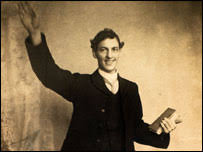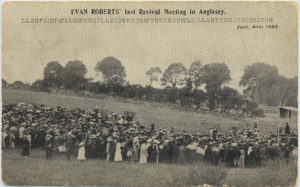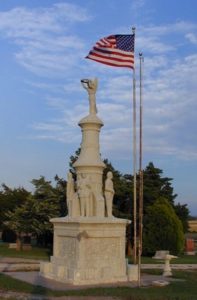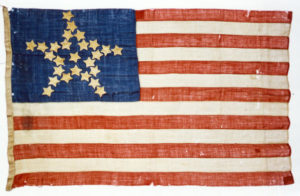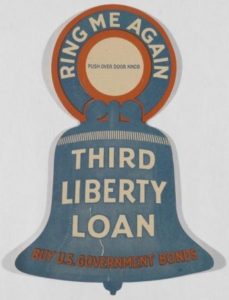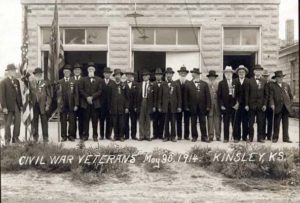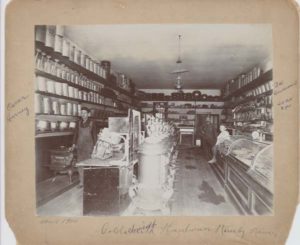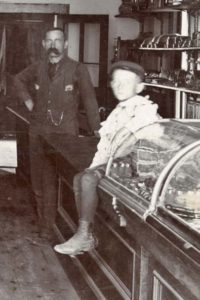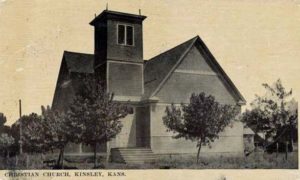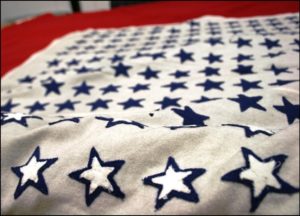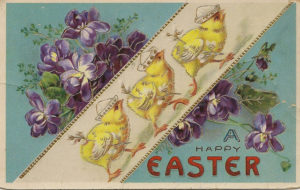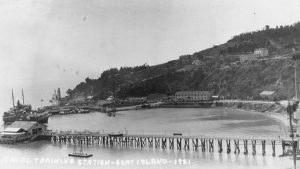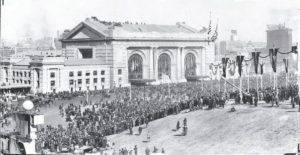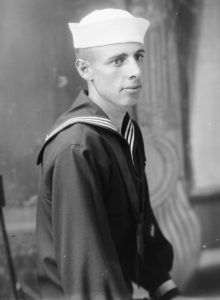Continuing on from the last post, this well-known evangelist, Reverend Emmanuel Jones, accepted a call to the Christian Church in Kinsley and assumed the duties in September, 1917. According to the Kansas City Globe:
“He is considered by the members of his congregation here (Emerson Park Christian Church) to be one of the hardest working pastors ever in charge of that congregation, and the people of Kinsley must get ready to follow the lead of a busy man. Mr. Jones had demonstrated by his work that he is a financial genius, a quality foreign to the average preacher. During the two years of his ministry here the burden of the church debt has been practically wiped out, while at the same time extensive improvements have been made in the church property.” (July 30, 1917)
Rev. Jones did prove to be a very busy man. On Sundays he conducted Sunday school, morning worship, Junior Endeavor group and evening worship, and Wednesday evening there was a prayer service. He also took on the duties of Scout Master.
But Rev. Jones was not destined to stay long in Kinsley. Six months after his arrival, the Kinsley Graphic reported that Rev. Jones went to Topeka to a meeting about work in the army camps (March 21, 1918). Then we read in May, how Mrs. Jones stood in for her husband and delivered the graduation address at the Nettleton School for its two graduates. Mr. Jones was absence due to a trip to Kansas City where he “made application for work in France in the Red Cross organization and hopes to go overseas soon.” (May 23, 1918, Kinsley Graphic) The next week he was “called back to Topeka to appear before the War Personnel committee, for examination for overseas work.” (May 30, 1918, Kinsley Graphic)
Before he left, he took his scouts on a camping trip. Scouts Robert Wilson (see Post #44) and Harry Ott turned in this report of the campout for the June 6 issue of the Kinsley Graphic.
We left town at 4 p.m. last Friday afternoon. We met at the Scout room and loaded the equipment on a truck. We all walked to the south bridge and then down the river about a mile where we pitched our camp and gathered fire wood for our fire and we went into the river and dug holes deep enough to jump in the next morning at 5 a.m.
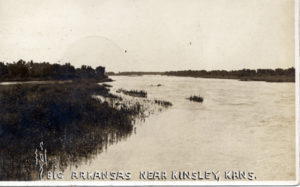
After which we had supper, consisting of pork and beans, bread and butter and cocoa, after which all the boys washed his own dishes; then we had over one hour drilling and while we were drilling several boys from the town came out to see our camp. Rev. Jones, our Scout Master, talked to them for quite a while and we wondered what about, of course we did lots of guessing. Then we played catch the spy and the boys were caught.
At 10 p.m. we were chosen in groups of four for the night duty beginning at 10:30. Each group was to watch for one hour and half. Between 11:30 and 12, the alarm was sent out that the enemy were trying to get our grub. The first one to try to get through the line tripped over a rope we had stretched around their mess tent and we captured him and found him to be one of the boys that the Scout Master had talked to earlier in the evening. A few minutes later two other boys were caught after a close call in breaking the first trench. They left about 1:30 but never-the-less we had our guards out all night. Some of us had only about two hours sleep but it was well worth it.
The call came at 5:00 a.m. After a wash we had breakfast at 5:00 a.m. Wheatena (Scout Rations), ham and eggs, coffee and bread and butter. We had our flag raising and then drill, also the tests for second class and eight of the boys passed, some of them 100 per cent.
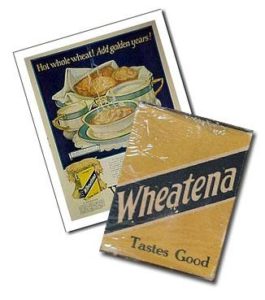
Dinner at 11:30. We had stewed and fried chicken, dumplings and bread and butter and spuds. Then we had inspection and for the twelfth time we went in swimming to prove that Scouts stand for“be clean.”
The tents were taken down and carried to the road and two boys were left in charge while we walked to town, getting home about 2:30.
We sure had the time of our life and shall be sore to lose our Scout Master when he leaves us but we are planning for another before he goes.
There was no report that the boys got to have another campout with their Scout Master. They did make up a fund to purchase a watch for Rev. Jones, who left to work overseas for the Y.M.C.A in August, 1918.
(To be continued)

